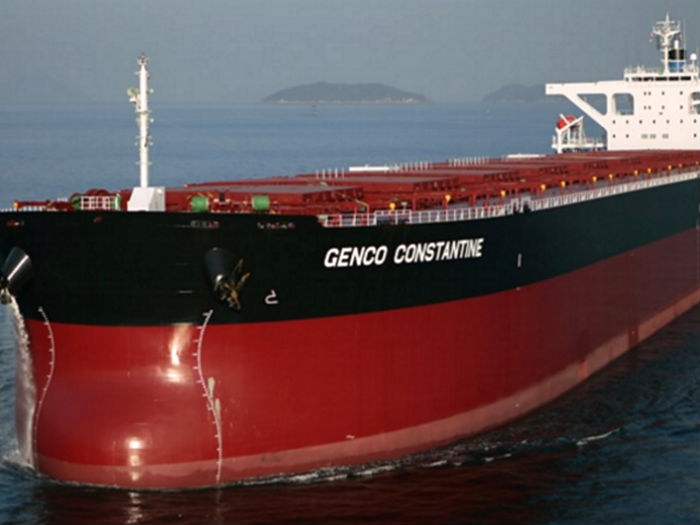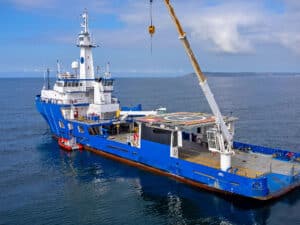
Dry bulk sector recovery ahead, says Drewry
Written by Marine Log Staff
Genco's Capesize dry bulk ship Genco Constantine, built in 2008
FEBRUARY 9, 2017—Driven by a healthy growth in the demand for iron ore and thermal coal, the dry bulk shipping sector is expected to show a recovery this year, according to the latest forecast from international shipping consultancy Drewry.
“The outlook for the dry bulk shipping market continues to be positive as the supply and demand gap continues to narrow,” says Rahul Sharan, Drewry’s lead analyst for dry bulk shipping. “Charter rates are expected to improve for most of the dry bulk segments in 2017 with the steepest recovery expected in Capesize segment. Average charter rates are expected to rise from $8,000 per day in 2016 to $12,800 per day level in 2017 and will further improve from 2018,” says Sharan.
In its latest edition of the Dry Bulk Forecaster, Drewry says the recovery in the sector will be as a result of an impressive outlook for dry bulk demand coupled with a small orderbook for newbuilds as a percentage of the total fleet capacity. Demand is projected to grow at 3% while supply is expected to grow by about 1% from 2017, making the dry bulk segment an interesting market to invest in.
The growth in iron ore and thermal coal trade will come from Asia, including Vietnam, South Korea, Taiwan and China. The rise in Chinese domestic steel consumption will provide employment to VLOCs and Capesize vessels carrying iron ore in the market. On the other hand, Vale’s new project S11D has become the most cost effective iron ore mining project and will increase iron ore supply from Brazil increasing total tonne miles; this will help demand for bigger vessels in the long term, says Drewry.
The supply side is projected to grow by just 1% from 2017 because of high scrapping and a low orderbook. The environmental regulations on Ballast Water Treatment System (BWTS) will become effective in September 2017 and IMO’s regulation on use of low sulfur fuel oil in 2020, which will result in high scrapping of older tonnage. Shipowners will prefer to scrap their old tonnage, with low earnings potential, than incur additional cost on scrubber and Ballast Water Treatment Systems.
On the other hand, a contracting orderbook and low future new orderings due to limited financing availability are keeping a check on future deliveries. At this point in time, the orderbook as a percentage of the total fleet, which is a strong indicator of future deliveries currently stands at a decade low.





Leave a Reply
You must be logged in to post a comment.